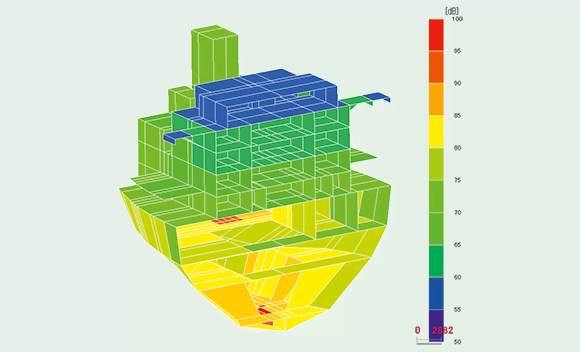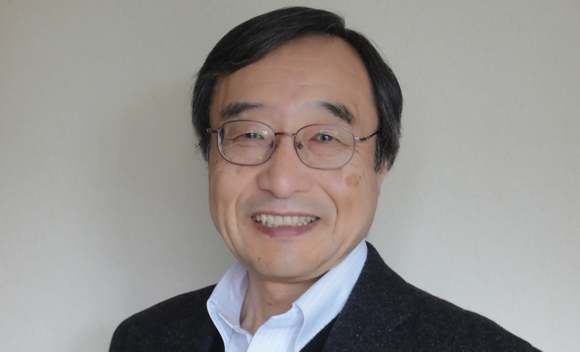It is important to regulate noise levels on ships. The goal of the International Maritime Organization (IMO) noise level code on board ships, which became mandatory for new ships in July 2014, is to protect mariners against hearing loss, improve comfort levels and make aware the need to communicate with colleagues and hear alarms. The level and duration of noise and the length of sailing time have a significant influence and are taken into account when calculating the noise limits according to the regulations. The IMO code recognizes the need to establish different noise level limits for machinery spaces, control rooms, workshops, and accommodation areas on ships; you don’t want sailors to have to wear hearing protection while sitting in a dining room, recreation room or sleeping compartment.
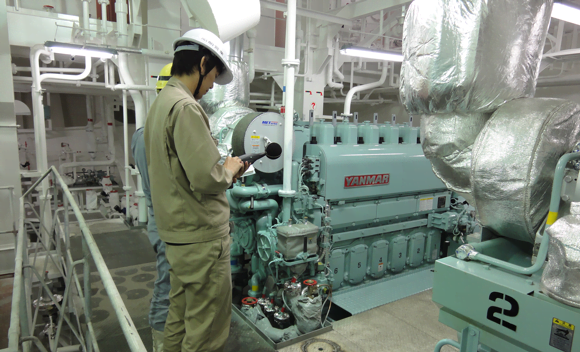
Sources of noise
Mariners are affected by a variety of mechanical, aerodynamic and hydro-acoustic noise. The main sources of ship noise are the main propulsion engines and the generators. In addition, auxiliary engines, pumps, turbochargers, compressors, fans, piping, and heating and air conditioning systems all generate noise, as do propellers, thrusters and exhaust systems.
Expertise in ship noise and vibration
Professor Shuri, who currently works at Tokai University in Japan, has more than 34 years of experience working for two shipbuilding companies: Hitachi Zosen Corporation and the Universal Shipbuilding Corporation. His roles have included senior researcher and laboratory chief, developing noise prediction programmes for ships and offshore structures, and studying noise control technologies.
Shipbuilding responsibilities
It is difficult to limit ship noise because the vibration from the sources propagate through the steel structure, which has very little damping and, for example, the structure near residential cabins can radiate sound.
The IMO noise level code for ships includes:
- A format for noise survey reports (mandatory)
- Guidance on the inclusion of noise issues in safety management systems (recommended)
- Suggested methods of attenuating noise (recommended)
- A simplified procedure for determining noise exposure (recommended)
All shipowners have to meet the new noise regulations for new ships with a gross tonnage of 1,600 and over. If the noise level exceeds the regulations, shipbuilders can’t deliver the ships. Usually the noise level limits of cabins and working spaces are described in the ship construction contract between shipbuilders and owners.
To comply with the noise level limits, shipbuilders:
- Estimate ship noise during the early design stage
- Implement noise control measures to reduce noise levels, if necessary
- Conduct noise control treatments during the building process
- Measure noise levels during sea trials
Finally, shipbuilders and shipowners confirm that the measurements satisfy the noise level limits. The noise limits are designed so that within each day or 24-hour period the equivalent continuous noise exposure for a seafarer does not exceed 80 dB.
To understand the current situation, the noise levels of 39 existing ships (mostly bulk carriers and oil tankers) were measured during sea trials. For ships of 150,000 GT, the average noise level in cabins or hospitals was around 55 dB and for ships of 5,000 GT, the average noise level was greater than 65 dB. These results indicate that noise levels in cabins are generally greater for smaller ships and that it is necessary to reduce the noise levels more than 5 dB in order to satisfy the noise level limits of the IMO noise code.
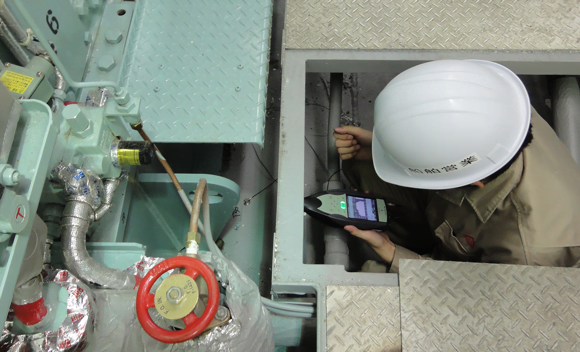
Continuous Noise
Exposure calculation
Daily noise exposure level (Lex,24h) represents the equivalent noise exposure level for a period of 24 hours.
where:
T is the effective duration on board T0 is the reference duration 24 h. The total equivalent continuous A-weighted sound pressure level (LAeq,,T), is calculated using the different noise levels (LAeq,Ti) and associated time periods with the following equation:
Where LAeq,Ti is the equivalent continuous A-weighted sound pressure level, in decimals, averaged over time interval Ti;
Lex,24h = LAeq,24h when seafarers are on board for a period of 24 hours.
Tackling noise
If the results from the sea trials do not satisfy the noise limits, shipbuilders carry out additional measurements to find the noise sources and the transmission route from the source to the receiving rooms. After analysing noise and vibration acceleration data, shipbuilders can investigate which is more dominant: structure-borne sound or airborne sound in the receiving room. Then shipbuilders have to decide on cost-effective noise-control measures. For example, to minimize accommodation noise levels it could be necessary to reduce structure-borne noise by isolating exhaust systems and certain pipe work and duct work from casings, bulkheads, etc.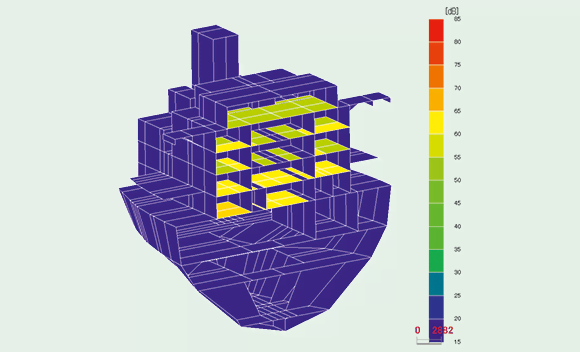
The vibration acceleration levels of a ship’s structure (lower picture) and the noise levels in cabins (upper pixture), calculated by a noise prediction programme.
Measuring both noise and vibration levels
The IMO noise level code stipulates how to measure noise levels on ships, detailing the requirements for measuring equipment, operational conditions during sea trials, and the measurement procedures.
“The Brüel & Kjær 2250 is popular among ship manufacturers as it measures both noise and vibration acceleration levels and this is very useful in order to investigate noise control measures,” explains Professor Shuri. “The 2250 can also carry out transmission loss measurements of a cabin construction and provide the absorption coefficient measurements in a cabin, which are necessary measurements when investigating noise control.”
Two projects for Japanese shipbuilders
Recently, Professor Shuri and Brüel & Kjær have been working together on two projects for the cooperative association of Japanese shipbuilders. The first project started in April 2011 and will finish in April 2016. “The aim of this project is to develop noise prediction programmes for shipbuilding engineers,” explains Professor Shuri. “Our second project, which started in March 2015 and will also finish in April 2016, is about developing noise control technology to effectively reduce noise levels in cabins.”These projects aim to obtain a lot of accurate noise and vibration data during sea trials and to measure many acoustic properties, such as transmission loss of a cabin construction and the absorption coefficient of cabins. “This data is necessary for the development of noise prediction programmes and to verify noise control measures,” says Professor Shuri. “Shipbuilding engineers have measured noise and vibration data and acoustic properties on more than 30 ships using a 2250 and have used the building acoustics measurement system. We have obtained a lot of data, relying on technical support from the engineers at Brüel & Kjær Japan,” explains Professor Shuri.
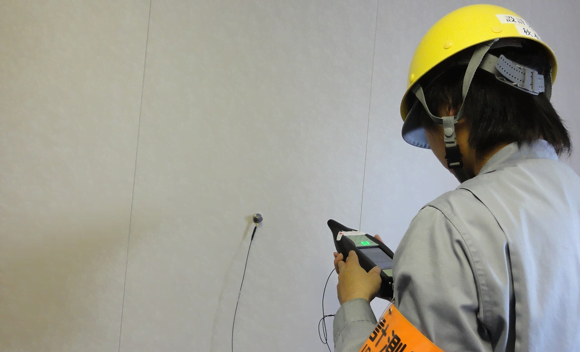
Noise levels (DB) for ships of 1,600 GT and over
Work spaces
- Machinery spaces – 110
- Machinery control rooms – 75
- Workshops – 85Other work areas – 85
Navigation spaces
- Navigating bridge and chartrooms – 65
- Look-out posts, incl. navigating bridge wings and windows – 70
- Radio rooms – 60
- Radar rooms – 65
Accommodation spaces
- Cabin and hospitals – 60 (55 for ships over 10,000 GT)
- Mess rooms – 65 (55 for ships over 10,000 GT)
- Recreation rooms – 65 (60 for ships over 10,000 GT)
- External recreation areas - 75
- Offices – 65 (60 for ships over 10,000 GT)
Designing to reduce noise
Shipbuilders are gradually improving ship designs to reduce noise. For example, adding damping materials to steel structures and employing floating floors and high-performance insulation walls to help reduce noise levels in cabins. Advances in engine-mounting systems have also lowered noise and kept it from travelling through a ship’s hull. Sound insulation is also used more effectively in ship machine spaces than in the past, to reduce the airborne sound from machines.
Engineers working for shipbuilders are increasingly using noise prediction programmes to improve ship designs, predicting cabin noise levels early in the design process. And they are also developing noise control measures in cooperation with material manufacturers to effectively reduce noise levels in cabins.
“To effectively reduce noise, engineers need precise noise predictions, which can be made early in the design process, along with the proper implementation of noise control measures and the accurate measurement of noise and vibration,” says Professor Shuri. “There is a need to continuously improve noise control materials, and develop new technologies in cooperation with engineers, according to the requirements of shipbuilders.”
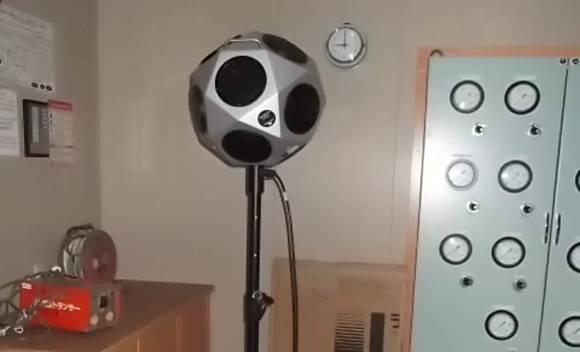
Stricter regulations to come
These projects are still ongoing but it is clear that precise noise and vibration measurements, involving both the right equipment and the right methods, are essential for the shipbuilding industry. Brüel & Kjær continue to help shipbuilders achieve greater accuracy, to better meet the noise regulations. “I believe that the requirements for reducing noise levels will increase and noise level limits will become even stricter in the future,” says Professor Shuri.
Looking to the future, Professor Shuri believes that noise source identification technology is one of the most effective methods to reduce noise on ships: “To provide an effective method for engineers, I hope to develop practical usage rules for noise source identification in ship cabins during sea trials, in cooperation with engineers from Brüel & Kjær Japan,” concludes Professor Shuri.
Professor Hideyuki Shuri
Professor Hideyuki Shuri’s work includes developing noise prediction programmes for ships:
April 1974 to August 2002: Worked for the Hitachi Zosen Corporation
September 2002 to March 2008: Worked for the Universal Shipbuilding Corporation
April 2008 – present: Professor at the Department of Navigation and Ocean Engineering, School of Marine Science and Technology, Tokai University, Japan.

Abonnez-vous à notre Newsletter et recevez les dernières actualités en acoustique et vibrations





